Water Kefir Grains: The Tiny Titans of Fermentation
Have you ever wondered where water kefir grains come from? Known also as Tibicos, water kefir is a bubbly cultured drink with origins in Mexico. The story goes that these grains first appeared naturally on the pads of Opuntia cacti, thriving on the sugars and water in the succulent plant. Now, people cultivate these grains worldwide, offering a fun and healthful way to ferment beverages.
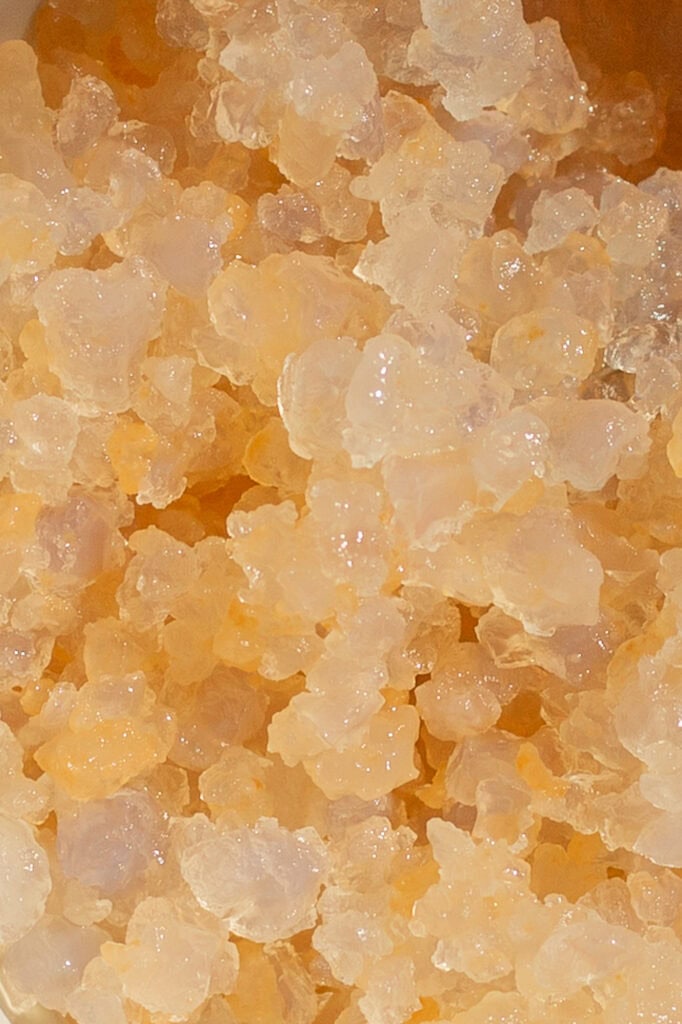
Do Water Kefir Grains Multiply? Absolutely!
When you mix sugar water with water kefir grains, magic (fermentation) happens. These grains (not actual grains but symbiotic communities of microbes) reside in a polysaccharide matrix they create. They’re like tiny architects, building their micro-homes and multiplying as conditions allow. This process is quite different from kombucha, which leans more on yeasts and acetic acid bacteria; water kefir, in contrast, teems with a rich variety of beneficial lactic acid bacteria.
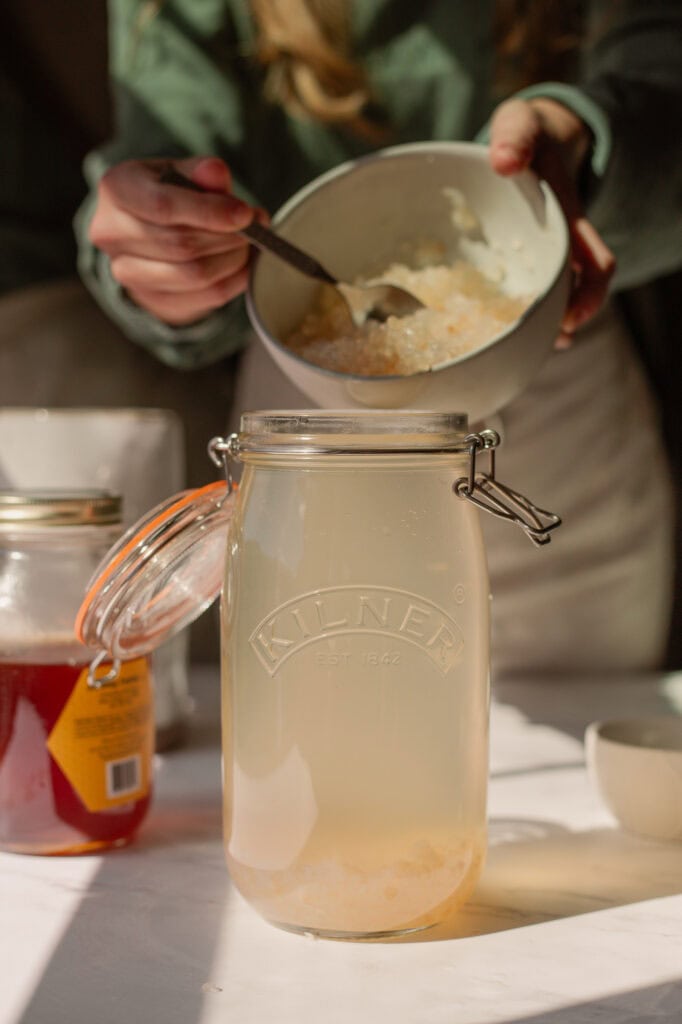
A Closer Look at the Microbial Makeup
The probiotic powerhouses within water kefir grains include Lactobacillus brevis, Lactobacillus casei, Lactobacillus hordei, and Leuconostoc mesenteroides, to name a few. These microbes ensure gut health benefits and churn out healthy byproducts known as postbiotics during the fermentation of sugar water into water kefir.
Reusable and Generous: The Gift that Keeps on Giving
One of the best parts about water kefir grains? They are forever reusable. Take good care of them; they’ll help you brew endless gallons of water kefir. You can even share them with friends, spreading the joy of water kefir fermentation far and wide.
What Color are Water Kefir Grains?
These grains come in various shades, from clear to dark golden brown. Their color largely depends on what you feed them. For example, grains fed with molasses tend to take on a golden hue, while those fed with plain organic cane sugar are more likely to be translucent white.
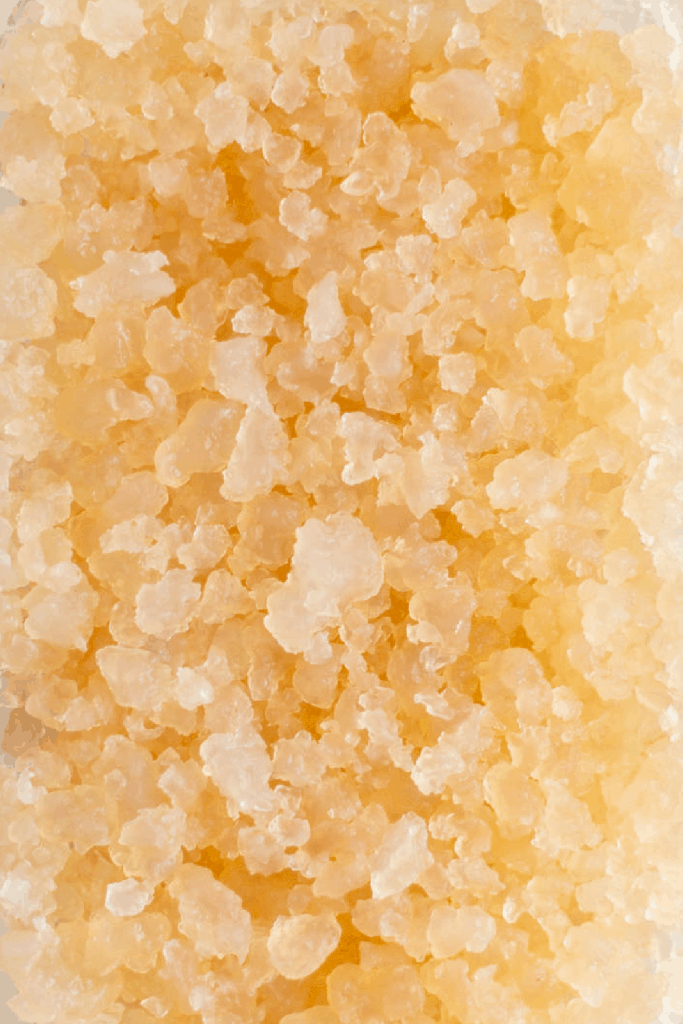
How to Feed and Store Water Kefir Grains
My typical recipe for primary fermentation includes a pinch of salt, some organic unsulphured molasses, and sugar water. This mix not only feeds the grains but selects for the most beneficial bacteria. Here’s a quick guide to my feeding recipe for about 1 quart of water kefir:
Ingredients:
- 2 grams of sea salt
- 50 grams organic, unrefined cane sugar
- 5 grams organic molasses (or substitute with honey, apple juice, maple syrup)
- 1000 grams filtered water
Method:
- Combine all ingredients and stir until dissolved.
- Bring to a boil, then allow to cool. Then this mixture is ready for you to feed to your water kefir grains.
Occasionally, I let the grains ferment at room temperature for a week in this mixture, enhancing their growth and structural integrity. This resting period promotes the activity of microaerophilic and anaerobic bacteria, which is vital for developing firm, healthy grains.
Things You May Need:
Storing Extra Kefir Grains
To keep your grains active, refresh them in a new batch of sugar water mix every 24-48 hours. For a break, hibernate them in the fridge in fresh sugar water, changing it every two to three weeks. They can also be dehydrated for long-term storage—a technique I share in The Cultured Guru School of Fermentation.
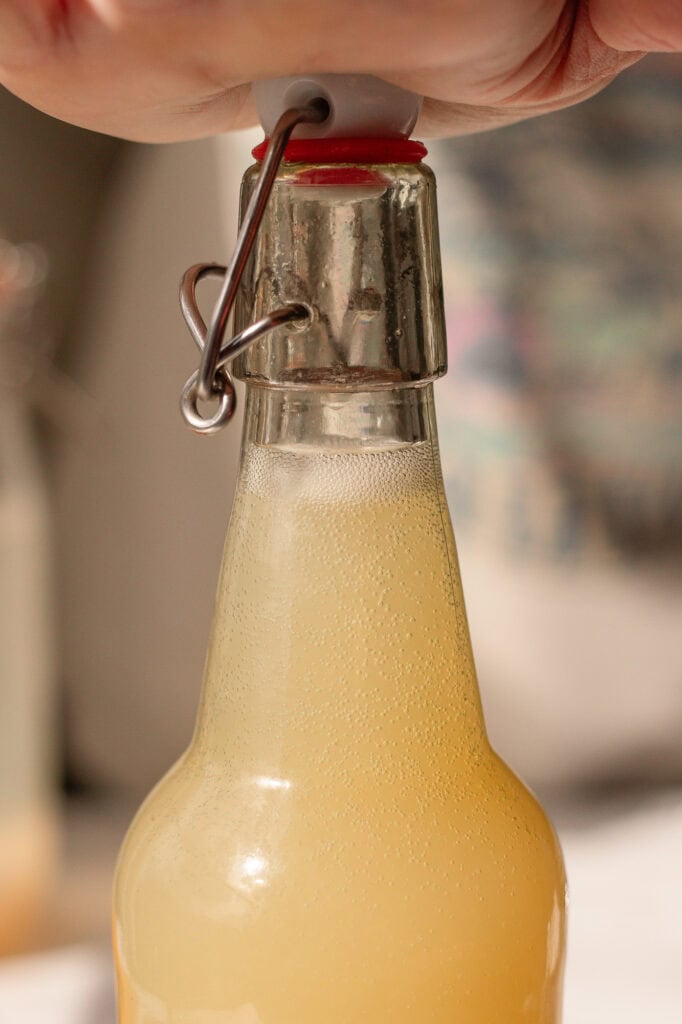
Where to Buy Water Kefir Grains
I love getting natural cultures from makers on Etsy!
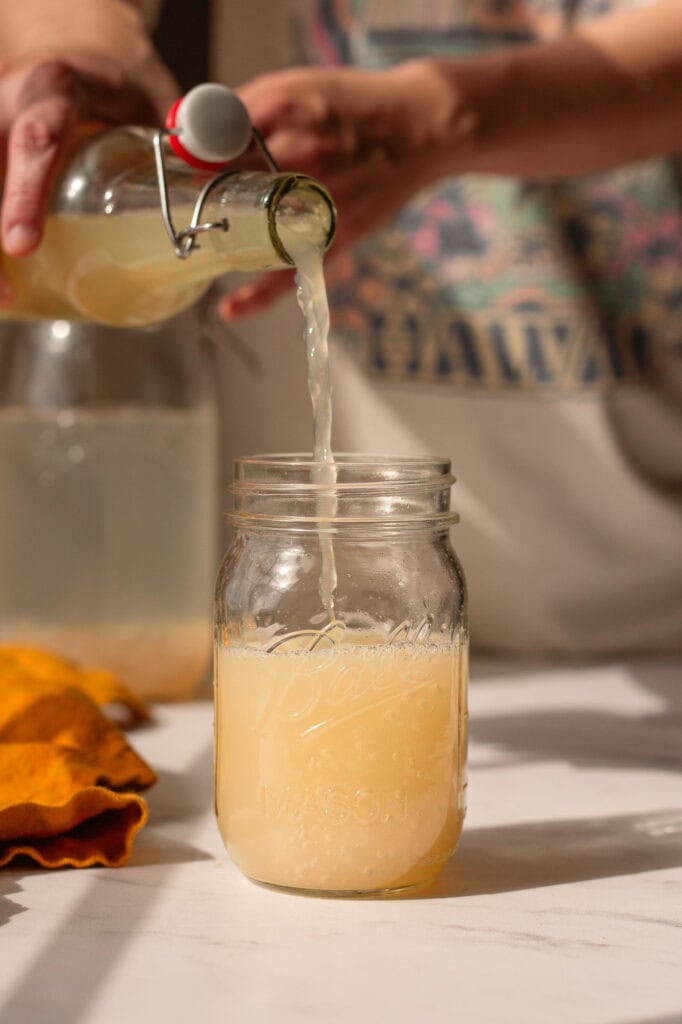
Easy Recipes You Should Try & More Blogs to Read
- The Difference Between Water Kefir and Kombucha; Which One is Healthier?
- Fermented Pomegranate Orange Adrenal Cocktail
- How to Make Coconut Water Kefir

Water Kefir Primary Fermentation Recipe
Are your kefir grains too small and not multiplying? Are you looking to add more bubbles to your water kefir? Learn how to grow water kefir grains and keep them healthy with this water kefir primary fermentation recipe.
- Prep: 10 minutes
- Cook: 10 minutes
- Total Time: 48 hours 20 minutes
Ingredients
- 2 grams sea salt
- 50 grams cane sugar, organic
- 5 grams molasses, organic and unsulphured*
- 1000 grams filtered water
- about 1/4 cup water kefir grains (~ 50 grams)
Instructions
- Gather your ingredients
- Bring the water to a boil and dissolve the sugar, molasses (optional), and cane sugar in the water.
- Remove from heat and allow the sugar water mixture to cool. It should be room temperature before moving on to the next step.
- Once it is cool, add the water kefir grains. Some may float, others may sink to the bottom, either way it’s fine.
- Cover the jar with a cloth lid and rubber-band. You must use a cloth lid to allow oxygen flow. (It’s best to use a tight-weave cloth to prevent bugs)
- Keep at a moderate room temperature, out of direct sunlight for 48 hours. Temperature should be between 65-78 degrees F.
- After 48 hours you should see some bubbles floating up from the kefir grains when you move the jar a little.
- Make a fresh batch of sugar water as in the previous directions.
- Strain the water kefir grains from the fermented sugar water and place them in the jar of fresh sugar water. Set the fermented sugar water aside for bottling. Add a tablespoon of already fermented water kefir to the fresh batch.
- The fermented sugar water is now ready for flavoring and bottling (secondary fermentation)
- For secondary fermentation, you need pressure safe glass bottles and fruit juice for flavoring. I typically fill the bottles 3/4th of the way with fermented sugar water and the rest of the way with juice. Once the bottles are sealed, carbonation builds in the bottles. Secondary fermentation can take anywhere from 24 to 72 hours depending on the temperature and amount of juice added.
Notes
- You can sub the molasses for apple juice or honey or a pitted date
- the molasses is optional.
- to see better growth and stronger grains, rest the grains for a week or two in the same sugar water before feeding fresh sugar water.
- Click here for live water kefir grains







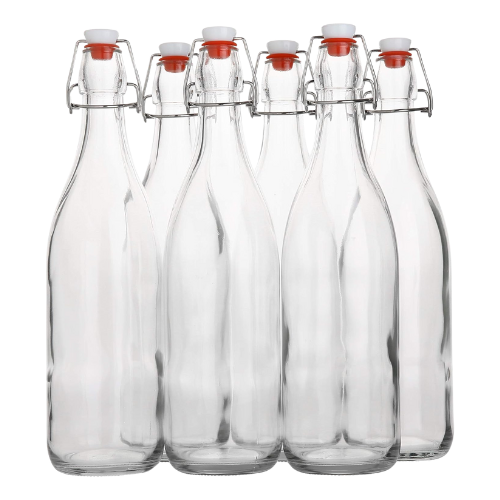
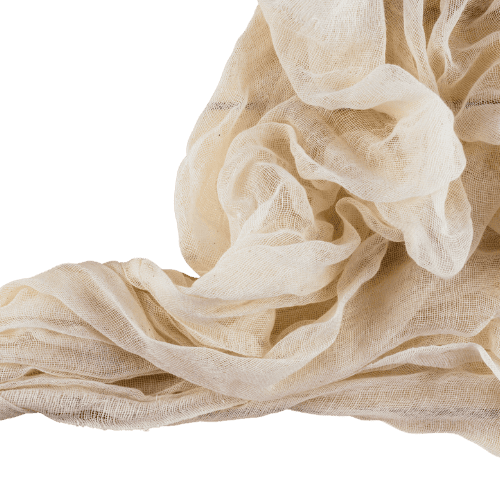












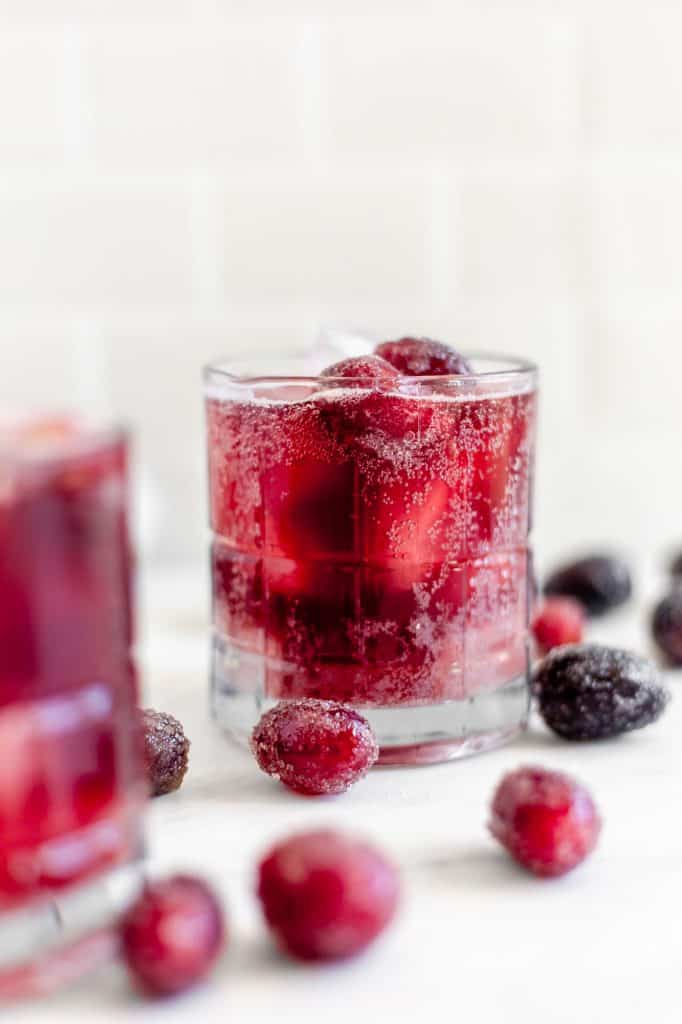
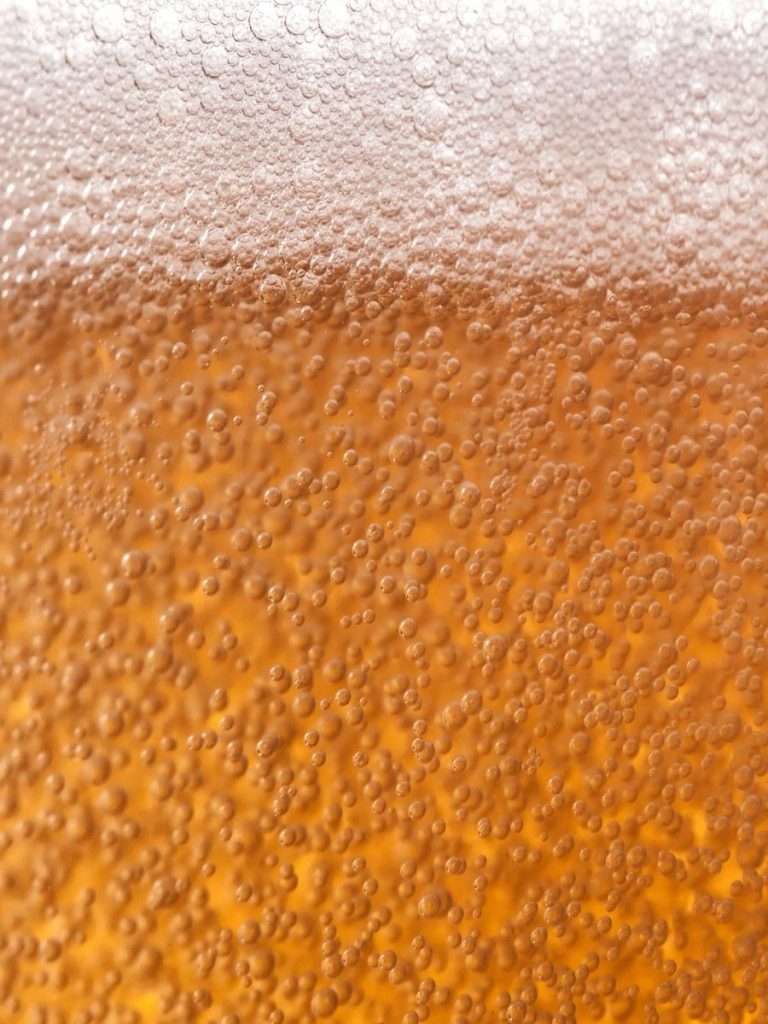
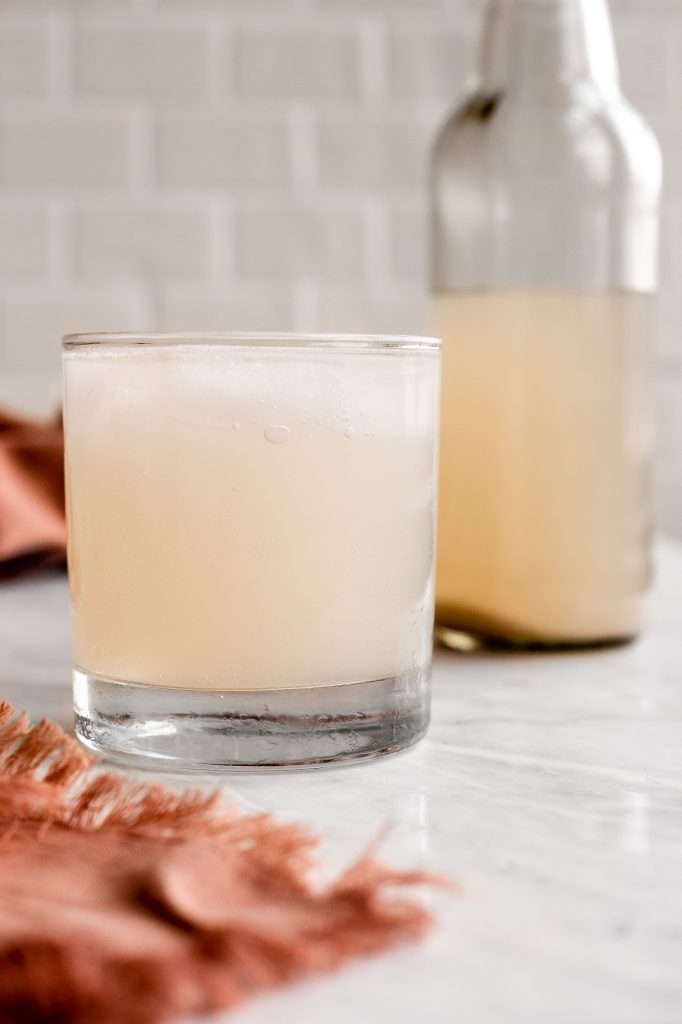

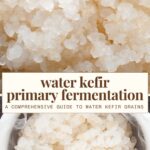
Hi! Is this recipe for a 1/4 cup of water kefir grains? Or is there a specific quantity weight-wise that you use? Thanks!
No, I don’t measure my grains by weight. I just use about 1/4 cup of grains per quart (950 ml) of liquid.
I think around 100 grams of grains per 1 liter would be a good place to start.
Hi! Maybe I misunderstood something but the recipe says 50g of water kefir grains per 1000 g of water. Yet in your comment you say 100g of grains per 1 liter of water? I thought a liter weighed about 1000 grams…
A liter of water is 1000 grams of water, but I’m not sure what that has to do with your question. My comment you are referring to is four years old. I’ve since weighed my grains and standardized the recipe. 1/4th a cup of MY grains weighs about 50 grams. Kefir grains are not uniform and do not have a standard mass. So about 1/4 a cup of grains will always have a variable mass.
Hi Kaitlynn, love this post! How long do go for the first round? Looking for any signs to know it’s done? What about second ferments?
You can check out any of our water kefir recipe blogs, and the recipes at the bottom of this blog post to learn about fermentation times and second fermentation procedures.
Hey Kaitlynn! So glad I came across your article – I’ve had the same kefir grains for nearly 5 years and they just do NOT multiply! I’ve never tried adding salt before though, and sometimes I let my water ferment for way longer than 2 days… Question: do you add salt every time you make water kefir and does it make your finished product salty?
Thanks!
Love your content!
I don’t add it every time, probably every other time. Or when I notice my grains aren’t as active as I’d like. Since I just add 3 grams of sea salt in a quart of liquid, that tiny amount doesn’t make it taste salty.
What if I was given only 1/2 Tablespoon of Kefir grains. Is it possible to still multiply? Everywhere I read it refers to 1/4 cup of grains. Can you advise?
Thank you!
Shelly
Yes! They will still multiply. You can still use my feeding recipe here with the grains you have.
Hello Kaitlynn,
I have read a lot about fermenting online and I enjoy your site and advice best. Concerning water kefir, I thought all the sugar was consumed by the bacteria and drinking it every day was okay. The thing is I wouldn’t know what to do with the fermented water kefir that I make if I didn’t drink it every day or the grains if I didn’t keep feeding them. Hibernate them, perhaps? Just curious how you manage your grains since you drink water kefir so seldom. Also, if you don’t continuously replenish the bacteria in your gut (every day) don’t you end up with a lack of these beneficial bacteria in your gut? I have read elsewhere that they don’t stick around. Thank you for a wonderful site, great advice and recipes.
Hi Joe!
The sugar is consumed by the bacteria, but not all of it. There’s still sugar present. When bacteria consume things they create byproducts. Some of their byproducts are acids, and some is just sugar broken down into simpler sugars. It would take a very long time for water kefir microbes to metabolize ALL of the sugar in the kefir, and if they did it would be more like drinking potent vinegar.
I hibernate my grains in the fridge and feed them fresh sugar water every two weeks. I may not drink water kefir every single day, but I do eat some fermented vegetables and other fermented foods every day, so I’m still continuously replenishing my good gut bacteria 🙂
Hello! My kefir grains dont look very healthy, they are much more mush like than grainy. is that normal? What can i do to help them? when i hibernate them in the fridge should i include salt then?
Thank you!
Hello! Have you been feeding them following our recipe or a different recipe?
Where can I get quality water kefir grains?
A good place to look is on Etsy! There are a lot of sellers, and you can get them for cheap.
Hi. With your primary fermentation of water kefir – have you tried both anaerobic fermentation and aerobic fermentation? Which do you prefer and what, if any differences did you notice?
-Tom
I wouldn’t word it like that, but, yes, I guess I have.
Normal primary fermentation lasting about 48 hours, in a vessel with a cloth covering, is considered aerobic/microaerophilic.
About once a month, I let my water kefir grains sit in primary fermentation for a couple of weeks at room temperature. After this long period, even with a cloth covering, the liquid is anaerobic (there’s no pellicle on the surface fixing oxygen like in kombucha). This helps keep my grains big and structurally strong because the long primary fermentation allows more microaerophilic and anaerobic bacteria (like Lactobacillus and Leuconostoc) to thrive in the grain communities. I discard the long primary fermentation liquid though.
Hi Kaitlynn,
I have 2 questions regarding your response:
1. If long primary fermentation allows beneficial bacteria like Lactobacillus to thrive, why discard the liquid? Or can we still drink the liquid because it’s supposed to contain a lot of good bugs?
2. Can we apply the principle of long primary fermentation to Milk Kefir also?
Thank you so much!
You can keep it for use as a vinegar-like substance. But you shouldn’t drink a lot of it. It is very acidic, and drinking a cup of it can cause issues.
No, milk kefir is very different, because milk is not just sugar, it also contains a lot of protein and fat. Long fermented milk kefir would be more like making soft cheese.
Hi Kaitlynn,
Can you discuss the differences in yogurt, buttermilk, sour cream vs. Fermented veggies?
Is GABA present in yogurt?
Thanks,
Serge
I’ll see about writing a blog that discusses this!
Hey KAITLYNN,
thanks so much for all your tips! your site is amazing.
I have a question: the above mentioned feeding recipe… do I understand it correctly that you let it sit in it without any additional fruits etc. and without a exchanging it for new liquid for a whole week?
best
Zora
Thank you! Yes, I only let it sit for a week occasionally though… Then I discard the liquid and start with a fresh batch, only fermenting for 48 hours before moving on to secondary fermentation.
I just ordered my first keifer grains and made the first batch of keifer water. The first quart is fermenting for the second time with lemon and ginger. When I went to start the second batch I realized I had over a cup of grains so I doubled the batch and added all the grains 1 cup to 1/2 gallon of liquid. Is it ok to add extra grains or should I store them? They are big and plump. Thank you for your help.
It’s fine to add extra grains, you just may notice that it ferments much faster and might be more acidic.
Hi Kaitlynn,
How about milk kefir? Do you also add Salt to Milk Kefir Grains if you want them to multiple and be healthy?
Thanks!
Your post are one of the few that have credible scientific source behind fermentation!
No, definitely not. Milk is a nutritious substance that provides milk kefir grains with all the minerals and carbohydrates necessary to thrive. Milk kefir grains only need milk.
Thanks Kaitlynn for this article and also your article on tempeh. They are both great. There is something that I question though. You said that when we feed the water kefir grains we should use a pinch of salt. In the list above it says to use 2 grams of sea salt. That didn’t sound right, so I did a calculation. Sea salt weighs about 5 grams/tsp depending on what type it is. A pinch is generally considered to be 1/16tsp. So 1 pinch of sea salt should weigh roughly 5 grams/16 or 0.3 grams.
So what should I use, 2 grams of sea salt which would be 0.4tsp, or 1 pinch (0.0625tsp)?
a “pinch” is a colloquial term, meant only to mean “a small amount”. It’s not mathematically definable and is an arbitrary measurement dependent on the finger size of the person doing the pinching. Obviously, you would use the measurements listed under “recipe”, 2 grams.
Hi Kaitlynn,
Thank you for your post. I ‘ve been searching for a trick to help my grains thrive and multiply. You said that every month you leave your grains in the primary fermentation: I’m guessing 4 TBS of grains to 4 TBS of sugar + salt for 1-2 weeks at room temperature. Wouldn’t the grains pickle in there. Doesn’t this starve them? So you just leave them although they must run out of sugar after a while and then you start over a fresh batch? I’ve notice when ordering grains that I get them after a week in the post (4 days) and they multiply well for about 10 days and then they stop and I’m not sure what I’m doing or whether the brewer is using a technique like yours to “starve the grains :” and then refeed. Also some people recommend putting lemon/lime in the first ferment which I’ve never done. Any thoughts on that. Thank you for any comments you have for me.
No, it doesn’t “pickle” them or starve them. If that were the case, I obviously wouldn’t do it…
The occasional long primary fermentation allows more microaerophilic and anaerobic bacteria to thrive in the grain communities… these are the types of microbes that secrete the compounds that actually build the structure of the grains.
This technique does not starve the grains at all, it simply gives certain types of desirable microbes in the grain communities an advantage to grow.
Hi I just made my third batch and the first two were great. I was wondering if I made a mistake I stared with 1/4 cup grains and the 2nd batch the grains had doubled and I made it with the 1/2 cup grains. The third time they were about 3/4 cup. I did not Measure them but this time the drink was sour and I got acid indigestion from drinking it. Am I adding to many grains. Thanks
Hi there!
Yes, it sounds like you are getting extra sour water kefir by using a higher ratio of grains. Grains multiply with each batch. To keep the flavor consistent just remove some and keep brewing the kefir with 1/4 cup of grains.
Hi there! I am super excited to make water kefir for the first time. I’ve read through and understand how to feed and care for the kefir grains, but how do I actually start? Is it something I buy like the live milk kefir grains? Thank you for your help!
Yes! you will need to buy live water kefir grains to get started. I suggest looking on Etsy for affordable live water kefir grains.
Hello, I made my first batch of water kefir but I left the grains in there too long, like for a week. Has the drink gone bad? Do I need to rinse the grains before starting another batch? Thank you.
Hi there! after a week of primary fermentation, it will be very sour and won’t carbonate well in secondary fermentation. Just discard the liquid and start a new batch, no need to rinse the grains.
Hi there and many thanks for your blog , just wondering do these grains need rest some times ? and do you mean by primary fermentation ?
many thanks
There are two fermentation steps to make water kefir. The primary fermentation is the first fermentation, in which sugar water is cultured with kefir grains. The grains don’t necessarily need to “rest” but you can let them sit and not feed them sometimes to help them grow, like I explained in this post.
When you make your ‘feeding mixture’ with salt and molasses I see it makes a quart of liquid. I presume you don’t use the whole quart at one time, so how long can I store this for?
I usually make a quart at a time. You can keep it in the fridge for a week.
Hi Kaitlynn,
Occasionally I have forgotten about my grains for about 2 weeks at room temp will that have any negative impact on the grains? Or will they be able to handle that? I was also curious about the hybernating grains do you have to do anything to them before you can use them for a second ferment. My last question is can they stay hybernating indefinitely or do they need to be brought out of the fridge from time to time?
Thanks,
Levi
No, the grains should be fine. I’ve left mine at room temperature in the same liquid for over a month and they are fine. After hibernating in the fridge you just need to feed them a few times before you’re ready to use the liquid in secondary fermentation. It’s best to dehydrate them to store them indefinitely.
Hi Kaitlynn,
I followed your recipe (salt and maple syrup) and now my kefir has little back specks in it (and some stuck to the bottom of the jars). I can’t tell if it’s mold or some sort of sediment reaction. Have you seen this before? Thanks!
I’ve never seen that. Probably just sediment or pigments from the maple.
Thanks for your reply! I’ve scoured the internet and there’s nothing out there that mentions anything similar to my situation. I’ve come to the same conclusion as you, so thank you!
I bought water kefir grains about 6 months ago and they have been in my fridge since. Can i save them at this point or are they garbage.
When you say you have to store them in a water/sugar solution, how do you make that solution. I am brand new at this so have no experience at all. Thank you in advance.
They’re probably fine and can be revived. How to make the solution is outlined in this blog post, under the heading ” My Grain Feeding Recipe (1 Quart):”
So grateful, thank you! Incredibly helpful, esp on the week long ferment for grain health.
Big thanks from me and my community, who are all benefiting from your sage advice and microbiotic expertise…
Hello
If I was to buy one of those cactus plants, is there anything I would need to do to the grains the produce to safely use them? I like their look.
I’ve never done this, and I’m not sure how to. I think the grains naturally form in the juice and on the pads of the cacti when they are harvested and prepared for nopales.
Good day! I trust you all are well! I have read your lovely articles about water kefir but I still feel somewhat lost. I bought dried water kefir grains and started to rehydrate them. I followed the instructions (more or less…) I used organic raw cane sugar and a slice of lemon (it wasn’t in the instructions). The grains were small and brownish. After a few cycles (about 4 to 5) they completely disintegrated like sand and the water stayed sweet.
I threw them away. I live in the UAE and the “room temperature” was over 30 degree centigrade, maybe 36 or so. (Outside temperature hits 48 occasionally and it might goes up to 55 some days in August…)
I started it again with new dehydrated grains. I keep the bottle in airconditioned room where the temperature is 28 degree Celsius maximum. After three cycles the grains are still brownish and small but not like sand (just a little bit…) I still feed them with organic raw cane sugar (as per the instructions) and with a slice of lemon. I poured out the first batch. The water after the second and third feeding and fermentation (2 days) was not sweet anymore. However the grains are still brownish and very small and on the bottom it looks like sand.
I don’t know if I am on the right way.
What is the maximum temperature I can keep the culture without any problem?
How long does it take for the culture to recover?
Is it suitable for consumption?
I don’t even know what it should taste like! (But I am desperate!)
Could you please help me? I would appreciate your advice!
Many thanks and regards
I can’t offer much advice if you don’t follow the directions I provide here. It sounds like you have not tried the suggestions in this blog post. I suggest following all the advice I’ve provided in this blog.
Thanks! I had been looking for help after having problems and found your site… I didn’t have time yet to try your instructions. But I will!
Hi Kaitlynn, I followed the instructions in the feeding recipe. I used organic maple syrup because it was available here. The taste after the first fermentation was very strange so I didn’t use it. The appearance of the grains didn’t change. (I would post the before-after pics if I could.) Should I repeat the protocol until the grains start growing and look better? How long might it take for the grains to recover?
Hello Kaitlynn, hope you are well!
I’ve been following you for a while, and thanks to you I decided to try and add more fermented foods to my diet.
I bought a batch of water kefir grains and since they looked small and somewhat weak, I fed them using your recipe with salt and molasses to help them perk up, three consecutive times.
They’re slowly gaining more volume but to my very big surprise, there’s a scooby on top. The grains still look well, and the smell is not unpleasant or anything.
Did I do something wrong? Is it still okay to use them?
Many thanks
that’s normal and can happen occasionally! Just scoop it off and continue.
This is awesome 👌 I have a scoby on top of mine too.
Hi Kaitlynn and thank you for your awesome blog. I am now beginning my water kefir journey and there seems to be some mixed opinions on if you can use metal with your kefir grains, such as metal strain.
What are your thoughts on that?
Again thanks so much for all your recipes and info
It’s a myth. Mostly all utensils are made of non-reactive metal, so it doesn’t matter. I use a fine mesh strainer made of stainless steel and it works great.
Hello! Your notes mention that we don’t have to feed like this every time, but if we do is that okay? Is there any risk of over mineralizing the grains?
You can feed like this every time. Sometimes I switch to just sugar when brewing specific flavors of water kefir.
I used this recipe to feed my kefir grains. Its been 4 days and I have a floating mother on top. Is this normal/ok? The grains are at the bottom and look pretty happy.
pretty common! all grains are different, so some do this and some don’t. As long as it’s not fuzzy or chalky its perfectly fine.
Hello!
My wife and I are starting our water kefir journey… but having a bit of trouble getting a good result. A couple odd things we’ve noticed after about a month of using the dehydrated starter grains.
1) our grains aren’t multiplying or even growing. They are still aboit the same size they were when we rehydrated them
2) the smell seems a bit odd to me… It doesn’t quite smell quite how others describe it online. To me, it doesnt smell very tangy. Rather, it has a mildly cheesy smell… Maybe that’s the yeast?. But I’m used to kombucha and the tangy smell that it has when fermented. I don’t smell much of that here.
Appreciate any thoughts. Been loving the cultured guru and a science based approach to ferments!
It’s normal for water kefir grains to have a slightly more funky smell than kombucha because it’s totally different microbes. Have you used the recipe here to feed them?
We’ve tried variations on it in the past before finding your site. At the time we found your site, we were using 250 to 500 ml coconut water then the rest regular filtered water (1000ml liquid in total). Then of course the sugar.
We’ve switched to using your recipe for the last several batches but don’t notice any growth or multiplication yet. Figuring it may need more time…?
Hello, I have been following your recipe and the Kefir tastes great, however even when left to carbonate for 5 days it does not get fizzy. Would you have any advice on this ? Thanks
I am new at making kefir, your information is very helpful, thank you. If there are no bubbles from the first fermentation is it still good to use?
yeah, you wont have bubbles until you carbonate it in a second fermentation